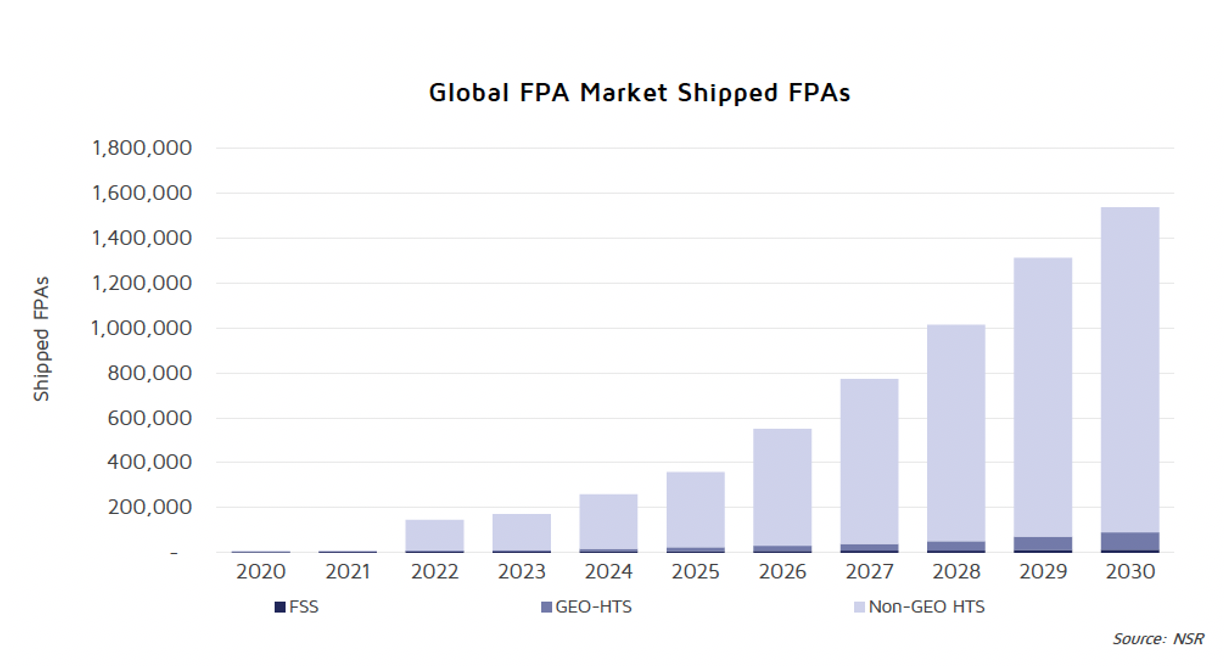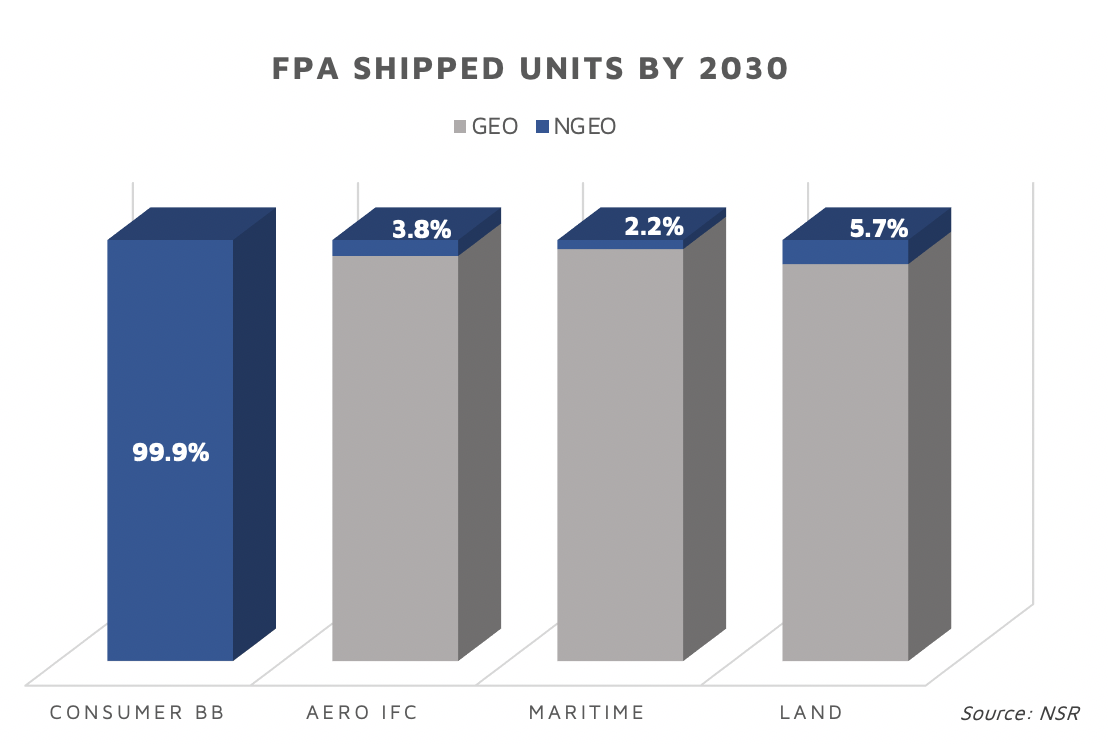The “One-Terminal” FPA Solution
The satellite industry continues to show remarkable changes, with new evolutionary technologies being launched in the space and ground segment consistently. The demand for internet connectivity will continue to rise as the COVID-19 pandemic pushes digitalization and forces people to work from home. For the Flat Panel Antenna market, this means existing and new FPA manufacturers have found ways to improve connectivity between the ground segment and the satellites. Diverse technologies are being developed that meet the requirements of a larger pool of customers across different segments.

As discussed in NSR’s Flat Panel Antenna Report, 6th edition, FPAs still have a significant way to go before they go mainstream. However, a wide range of unique FPA technologies is already present: fragmented aperture phased arrays, antennas that combine the technical benefits of MSAs and ESAs, hybrid antennas, and liquid crystal-based antennas, to name a few. With the launch of Non-GEO constellations, the ground segment has also received extra attention and innovation. Space X, Amazon Kuiper, OneWeb and other vertically integrated companies have also laid their eyes on the market.
Over the next years, shipped FPAs will go from single thousands to into hundreds of thousands. The majority of those, 94% of 2030 shipped FPAs, will be Non-GEO. Of that, a large chunk of will be for Consumer Broadband which is driven by Space X, where they are still pushing things to lower the production cost with 50% by the end of the year whilst scaling up production of their terminals.
GEO or LEO, or both?
LEO adoption takes place in primarily price sensitive markets (consumer broadband). GEO-HTS is mainly focused on higher-end level segments such as GovMil and Aeronautical. These markets come with complex installation requirements and higher costs for FPA components. By 2030, most FPA revenues are still expected to come from the GEO market. Specifically, the aeronautical market will generate most revenues, with demand for FPA form factors coming from passenger, business jets and Government use-cases. Whilst competition from parabolic antennas remains high in the maritime sector, the implementation of FPAs in the aeronautical, consumer broadband and enterprise are pushed by several vertically integrated companies.

Manufacturers are constantly aiming to bring more flexible and interoperable antennas to the market. FPAs are being designed in the interest of numerous constellations and antenna improvement. Earlier this month, The U8 antenna of Kymeta successfully interoperated with the OneWeb LEO constellation. Although the U8 antenna is now serving customers in GEO orbit, it will also serve OneWeb’s mobility customers in 2022. OneWeb is working with a selection of antenna manufacturers to target different verticals. In collaboration with Intellian they created the smallest flat panel antenna to connect with their LEO constellation, serving enterprise and government customers in 2022. Other antenna vendors and satellite operators also continue to announce a mix of FPA solutions across the range of end-user markets they are targeting.
Overall, industry leaders argue that the demand requirements from one customer to another still differ too much at the moment to serve the market with one antenna – aeronautical requirements differ from consumer broadband, government from commercial. Yet, as the market evolves faster than ever, vendors are getting closer to developing modular antennas that can be used in all circumstances.
The Bottom Line
Although FPAs have a strong uptake over the next ten years, most of its revenue by 2030 will still come from GEO-HTS. Antenna technology providers are creating antennas that can be used in multiple orbits and at multiple frequencies. For now, there still is a clear distinction in FPA price and capability per vertical. However, as more companies are looking to manufacture “the one terminal grail”, the market is becoming much more competitive, and the lines of antenna capabilities are blurring.
